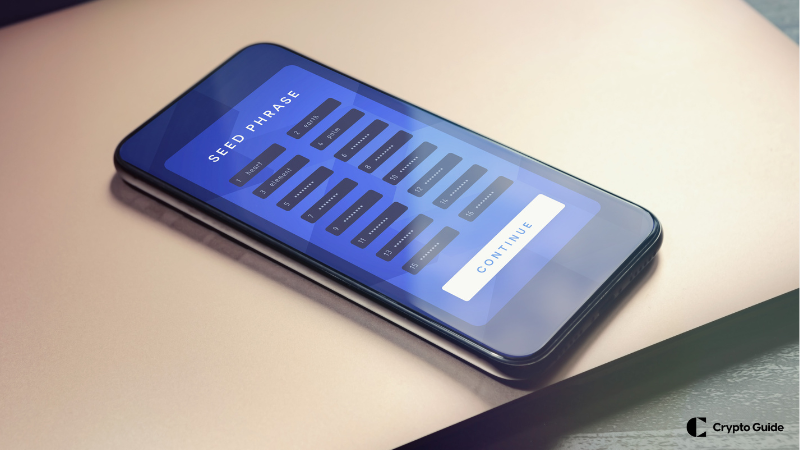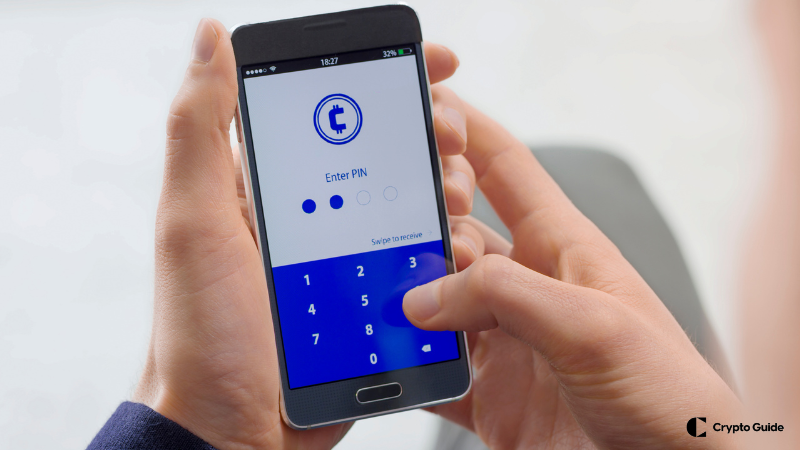Crypto Recovery: Getting Back Lost or Hacked Crypto
Many people lose access to their cryptocurrencies, leading to an estimated 3 billion BTC being permanently lost.
In this article, we explore various backup methods and crypto recovery services, explain options to restore access to your assets and provide valuable insights to protect your investments.
Table of content
Key Highlights
- Cryptocurrencies operate without a central authority, making crypto fraud recovery complex.
- Users' identities are often hidden, complicating the identification of thieves.
- Crypto transactions are irreversible, unlike traditional financial transactions.
- Stolen crypto can be quickly moved across borders, hindering crypto scam recovery.
- The lack of crypto regulation offers limited protection and support for recovering stolen cryptocurrency.
Why Is Crypto So Hard to Recover?
Crypto asset recovery is tough for a few reasons:
No Central Control. If someone's crypto gets stolen, there's no central place to go for help reversing the transaction. This decentralized system operates without intermediaries, highlighting the importance of understanding cryptocurrency and how it works.
Anonymity. People's identities in crypto transactions are often hidden, making it hard to identify the thief.
No Take-Backs. Once finished, a crypto transaction can't be undone. This is unlike credit card or bank transactions, which can sometimes be refunded if there's fraud.
Global Reach. Scammers can quickly send stolen crypto anywhere, making crypto scam recovery hard. Tracking stolen cryptocurrencies is almost impossible if they’re sent to mixers.
Few Rules. Crypto has few regulations yet, so there's little protection against scams or help recovering stolen cryptocurrency.
Lost Cryptocurrency Scenarios
Losing access to your cryptocurrency can be a nightmare. Unlike traditional bank accounts, recovering lost or stolen crypto can be challenging.
Lost Seed Phrases or Wallet Passwords
These are like the keys to your online treasure chest. Losing them makes accessing your cryptocurrency very difficult. But depending on your wallet type, there might be a way to get back in.
Crypto wallets offer backup options like seed phrases (a series of random words). You can recover your funds in a new wallet with a secure offline backup. To ensure the safety of your assets, learn how to backup a crypto wallet.

Hardware Wallet Issues
Hardware wallets are considered one of the most secure ways to store cryptocurrency. However, even these can malfunction.
- Backup Phrase Rescue: All hardware wallets allow recovery using your backup seed phrase. If your hardware wallet breaks or malfunctions, you can use the seed phrase to access your funds on a new or compatible software wallet.
- Manufacturer Support: If you're experiencing issues with your hardware wallet, contact the manufacturer's support team. They can help troubleshoot the problem or offer guidance on recovering your assets using your backup phrase.
Sent to the Wrong Address
To recover crypto sent to the wrong address can be extremely difficult or even impossible.
- If you mistakenly sent funds to an address you don’t control (like an exchange account with a typo), you might be able to contact customer support to see if they can help recover the funds.
- In most cases, there's no way to get funds sent to an incorrect address, especially if it belongs to someone else. So, always double-check the receiving address before confirming any crypto transaction.
Stolen Cryptocurrency Scenarios
Cryptocurrency can attract criminals just like any valuable asset. If you suspect your crypto is at risk, there are some things you can do.
Phishing or Compromised Accounts
- Immediately change your passwords on all crypto exchanges, wallets, and any accounts potentially linked to your compromised crypto account. Consider using multi-factor authentication (MFA) for added security.
- Contact the customer support teams of any exchanges or wallets where you hold cryptocurrency. Inform them of the suspected theft and request assistance to secure your accounts or freeze transactions.
- File a police report to document the theft. This can be helpful for insurance purposes or potential future investigations.

If you notice unauthorized transactions or suspicious activity on your crypto accounts, take these steps:
- Report the theft to the relevant platforms, including crypto exchanges, wallets, and any services where your stolen crypto might be held. This can help them freeze further transactions and potentially assist with investigations.
- Document the theft with a police report. While recovering stolen crypto can be challenging, a police report demonstrates you've taken action and might be helpful for insurance claims or future legal proceedings.
- Ask for help in online cryptocurrency groups. They might have tips for recovering from cryptocurrency fraud, but it's not always successful. Be careful not to share private details with strangers.
Advanced Recovery Techniques
When it comes to scammed crypto recovery, there are sophisticated methods that individuals can use to retrieve cryptocurrency.
Using Blockchain Forensics Services
Blockchain forensics services are specialized firms that track down stolen cryptocurrency. These services use advanced technology to analyze the blockchain, recording all crypto transactions. They can trace stolen funds by following the digital trail left by transactions.
If you're considering this option, contact a reputable blockchain forensics firm. They will likely ask for details about your transaction and related information to start their investigation.
Always have realistic expectations, while these services can sometimes successfully track stolen crypto, the nature of cryptocurrency makes it impossible to guarantee recovery.
Legal Actions
Taking legal action might help to recover scammed crypto. This involves reporting the theft to the authorities and hiring a lawyer specializing in cryptocurrency cases.
Cryptocurrency is worldwide and not controlled by one place, making it hard to deal with theft. It's also often anonymous, so finding the thief can be tough.
However, if you can figure out who took the crypto, you can get it back through legal steps.
Post-Recovery Considerations
Recovering lost or stolen cryptocurrency can be a stressful experience. However, it's also an opportunity to learn and improve your security practices for the future:
Learning and Moving Forward
Once you've (hopefully) recovered your lost crypto or dealt with the aftermath of the theft, take some time to reflect on what happened:
- Try to understand how you lost your crypto. Was it a phishing attack? A hardware wallet malfunction? Identifying the root cause can help you prevent similar incidents in the future.
- Evaluate your current security measures for your crypto holdings. Are your passwords strong and unique? Are your private keys stored securely? Look for any gaps in your security and make necessary improvements.
- Cryptocurrency is constantly evolving, and so are the threats. Stay informed about the latest security risks and best practices to protect your cryptocurrency.
Advanced Security Measures
Now that you've learned from your experience, it's time to rebuild your cryptocurrency portfolio with a focus on security:
- Always use strong, unique passwords for your cryptocurrency accounts and wallets. Consider enabling MFA for an extra layer of protection.

- Store your private keys securely. Compared to software, hardware wallets offer higher level of security for your cryptocurrencies.
- If you use software wallets, ensure you have regular backups of your private keys or seed phrases. Store these backups securely offline, ideally on a piece of paper or a dedicated hardware wallet.
- Be careful with emails, websites, or messages that might trick you into giving away your passwords or secret keys. Always check the website addresses carefully and be suspicious of unexpected offers or links.
Final Words on Crypto Recovery
Crypto recovery is very hard because there's no central place to ask for help, people's identities are often hidden, and it can't be reversed once a transaction is done.
If you lose the password to your cryptocurrency, you can get it back if you have backups or can contact the wallet's support team. But if someone steals your cryptocurrency, it's usually very difficult to get it back.
FAQ About Crypto Recovery
How does your crypto wallet get hacked?
Crypto wallets get hacked through phishing attacks, malware, insecure internet connections, or using compromised devices.
Can hacked crypto be recovered?
To recover scammed crypto is challenging and often impossible, but sometimes tracking and legal actions might help.
What is the recovery key in a crypto wallet?
A recovery key is a unique set of words (seed phrase) that allows you to regain access to your crypto if you lose your wallet or forget your password.
How long does it take to recover crypto?
The time to recover crypto varies greatly; it can range from days to never, depending on the situation and recovery methods used. For instance, if you deal with MT GOX, the whole process can take 10 years.
How to protect recovered crypto?
Protect recovered crypto by using strong passwords, enabling two-factor authentication, using hardware wallets, and keeping your recovery key secure and offline.







